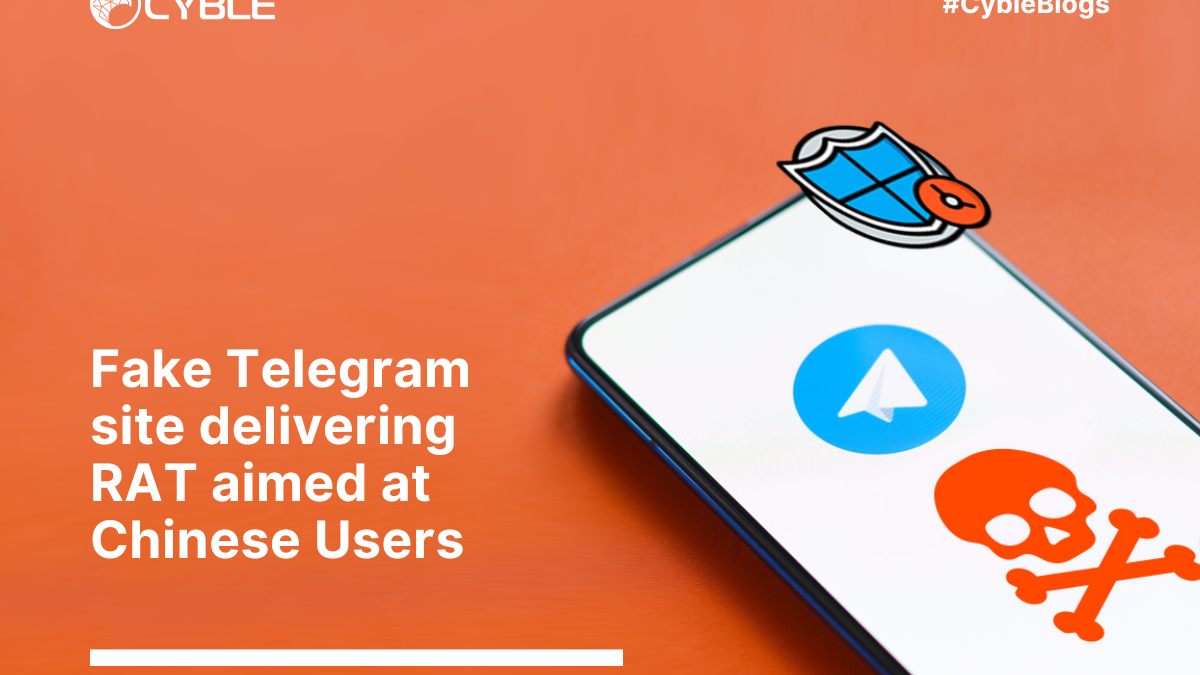 Blog's Page
Blog's Page

In Recent Years, Messaging Platforms Have Become Prime Targets For Cybercriminals Looking To Exploit Trust And Popularity. One Such Target Is Telegram, A Widely-used Messaging App Known For Its Encrypted Communications And Broad User Base. Cyber Attackers Are Now Weaponizing Fake Telegram Apps And Malware-laced Telegram Clones To Deliver Spyware And Other Malicious Payloads. This Blog Explores The Rise Of Fake Telegram Malware And Delivery Spyware, Detailing How They Operate, Who’s At Risk, And How To Defend Against Them.
Fake Telegram Malware Refers To Malicious Applications Or Software That Masquerade As The Legitimate Telegram App Or Its Variants (e.g., Telegram X Or Telegram Premium). These Impostor Apps Are Typically Distributed Outside Official App Stores, Such As Via Third-party APK Sites, Phishing Emails, Or Links In Forums And Social Media.
Once Installed, These Apps Can:
Steal Personal Data Including Contacts, Messages, Files, And Login Credentials.
Record Audio And Video Through The Device's Microphone Or Camera.
Exfiltrate Sensitive Information To Command-and-control (C2) Servers Operated By Cybercriminals.
Install Spyware Or Other Malware In The Background Without User Consent.
In Essence, These Fake Apps Are A Hybrid Of trojan Malware And spyware, Designed To Look And Function Like Telegram While Performing Covert Operations.
Several Cybersecurity Firms Have Reported Campaigns That Use Fake Telegram Apps To Target Users Globally:
ESET Reported A Campaign Targeting Android Users In East Asia, Where Fake Telegram Apps Were Modified To Include remote Access Trojans (RATs) And data Stealers.
In 2023, Malware Named "BadBazaar" Was Found To Be Disguised As A Modified Telegram App Targeting Uyghur-speaking Populations In China.
Dr. Web Discovered Multiple Fake Telegram Clients In 2024 That Installed Spyware Capable Of Tracking Location, Stealing Call Logs, And Recording Audio.
These Campaigns Indicate A Growing Trend: nation-state Actors, cybercriminal Gangs, And APT Groups Are All Leveraging Telegram’s Name And Appearance To Lure Victims Into Downloading Malware.
Delivery Spyware Is A Broader Category That Includes Malware Designed To deliver, Install, Or Activate Additional Spyware On A Victim’s Device. When Combined With Fake Telegram Apps, Delivery Spyware Acts As The Payload Carrier.
Here’s How It Works:
Initial Infection:
A User Downloads A Fake Telegram APK From An Unofficial Source. The App Appears Legitimate, Often Mimicking Telegram’s UI Perfectly.
Background Execution:
The Malware Runs Silently In The Background. It Might Request Dangerous Permissions Like Access To Messages, Contacts, Camera, Or Microphone.
Payload Deployment:
The Delivery Spyware Contacts A C2 Server And Downloads Additional Spyware Payloads Such As:
Keyloggers
Screen Recorders
Clipboard Hijackers
Banking Trojans
Surveillance And Data Theft:
The Spyware Continuously Collects Sensitive Data And Sends It To Attackers. It Can Also Execute Commands Like Restarting The Phone, Sending SMS Messages, Or Deleting Files.
Persistence:
Advanced Versions Gain persistence, Making Them Hard To Remove Even After App Uninstallation. Some May Even Disable Security Apps.
Cybercriminals Use Various social Engineering And distribution Tactics To Spread Fake Telegram Malware:
Phishing Websites: Sites Posing As The Official Telegram Download Page.
Fake Telegram Premium Offers: Scams Claiming To Offer Free Access To Paid Features.
Malicious Ads And Pop-ups: Especially On Adult Websites Or Pirated Software Platforms.
Telegram Clones On Third-party App Stores: Especially Common On Android.
Spear-phishing Emails: Targeted Messages Urging Users To Switch To A “more Secure” Version Of Telegram.
Telegram Is A High-value Target For Malware Campaigns Because:
Massive User Base: Over 900 Million Users Worldwide.
Reputation For Security: Users Trust Telegram For Private Conversations.
Open-source Codebase: Allows Attackers To Fork The Code And Create Convincing Clones.
Wide Use By Journalists, Activists, And Businesses: These Users Are Often Of High Interest To Surveillance Actors.
Telegram’s Security Features Ironically Make It More Appealing To Attackers Who Use Its Reputation To disguise Malware Delivery And evade Detection.
Fake Telegram Malware And Delivery Spyware Can Have serious Consequences:
Corporate Espionage: Attackers Can Access Confidential Communications And Trade Secrets.
Personal Privacy Violations: Victims May Unknowingly Expose Personal Photos, Audio Recordings, And Conversations.
Financial Theft: Spyware Can Capture Banking Credentials And One-time Passwords (OTPs).
Surveillance & Censorship: In Authoritarian Regimes, Such Tools Are Used To Spy On Dissidents And Journalists.
To Identify A Fake Telegram App, Look For These Signs:
| Indicator | Details |
|---|---|
| Unusual Permissions | Requests Access To Unnecessary Data (e.g., Background Audio, SMS, File Manager) |
| Source Of Download | Came From Unofficial Sources (e.g., Random Links, APK Sites) |
| Battery Drain | Unusual Battery Or Data Usage In The Background |
| Lag Or App Crashes | Frequent Lags, Crashes, Or Abnormal Behavior |
| Inconsistencies In UI | Slight Differences In Fonts, Logos, Or Menus |
Always Download From Official Stores:
Stick To Google Play Store, Apple App Store, Or Telegram’s Official Site (https://telegram.org).
Verify App Permissions:
Avoid Granting Unnecessary Permissions, Especially On Android Devices.
Use Mobile Antivirus Apps:
Apps Like Bitdefender, Kaspersky, Or Norton Can Detect Spyware Or Malicious Clones.
Avoid Cracked Apps And Modded APKs:
These Often Carry Hidden Spyware Or Malware.
Enable Play Protect (Android):
Google’s Built-in Protection Helps Flag Suspicious Apps.
Keep OS And Apps Updated:
Updates Often Fix Security Vulnerabilities That Malware Exploits.
Monitor Device Behavior:
If Your Device Behaves Oddly (heats Up, Slows Down, Loses Battery Fast), Run A Security Scan Immediately.
Fake Telegram Malware And Delivery Spyware Represent A serious And Growing Cybersecurity Threat. By Disguising Malicious Software As Trusted Apps, Attackers Can Easily Breach The Privacy Of Individuals And Organizations Alike. The Sophistication Of These Threats Highlights The Importance Of cyber Hygiene, awareness, And using Trusted Sources For App Downloads. As Messaging Apps Continue To Dominate Communication Channels, Users Must Remain Vigilant And Proactive In Protecting Their Digital Lives.
Fake Telegram Malware, Telegram Spyware APK, Delivery Spyware, Telegram Clone Virus, Telegram Malware 2025, Android Telegram Hack, Telegram APK Spywar